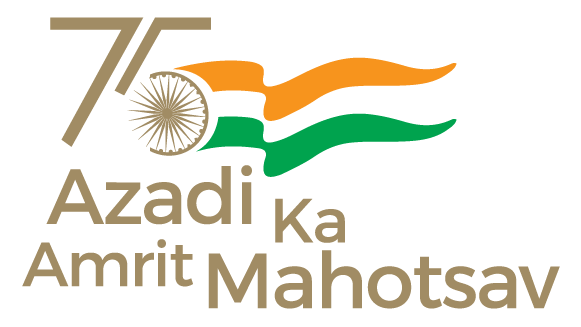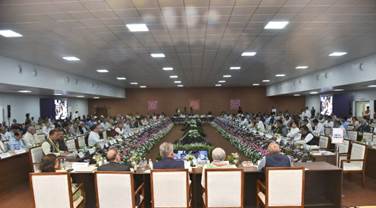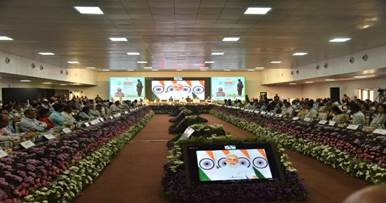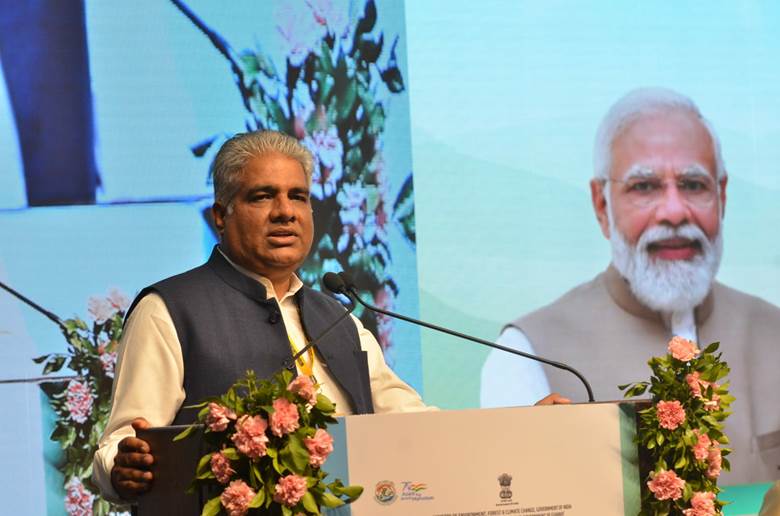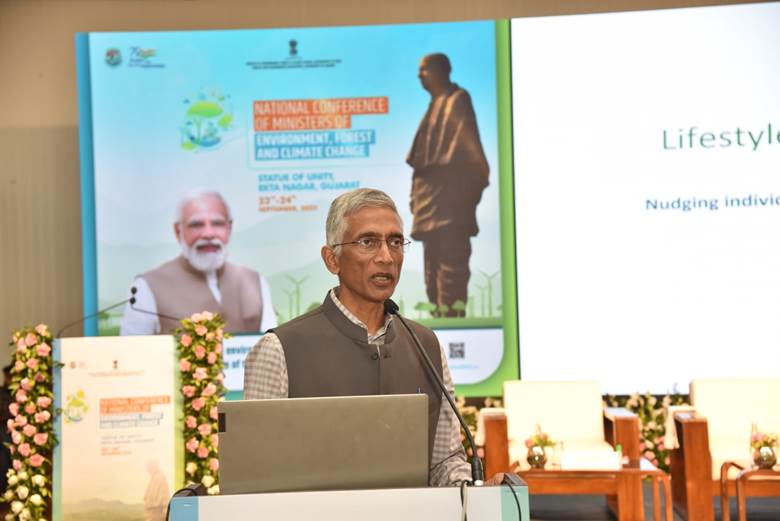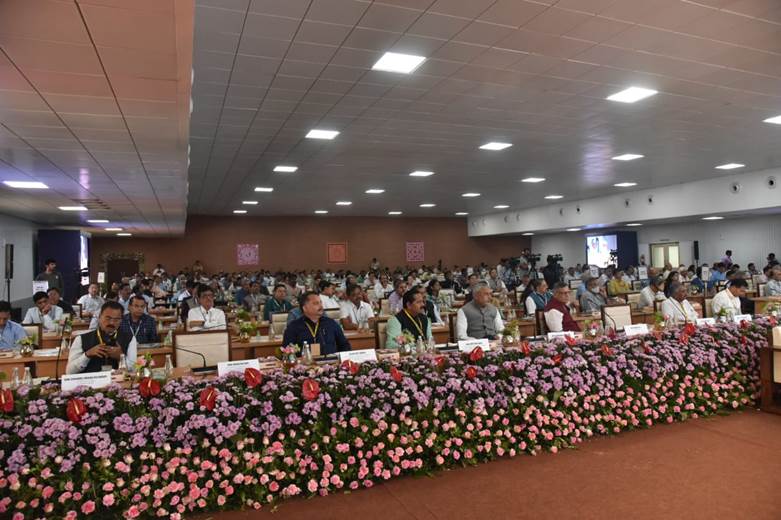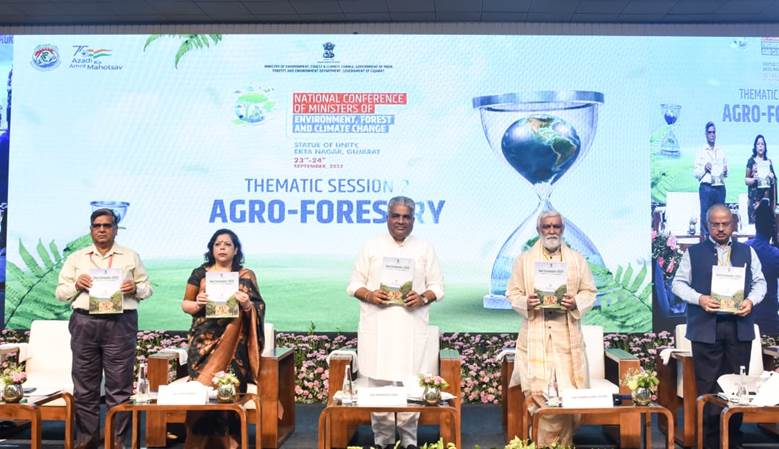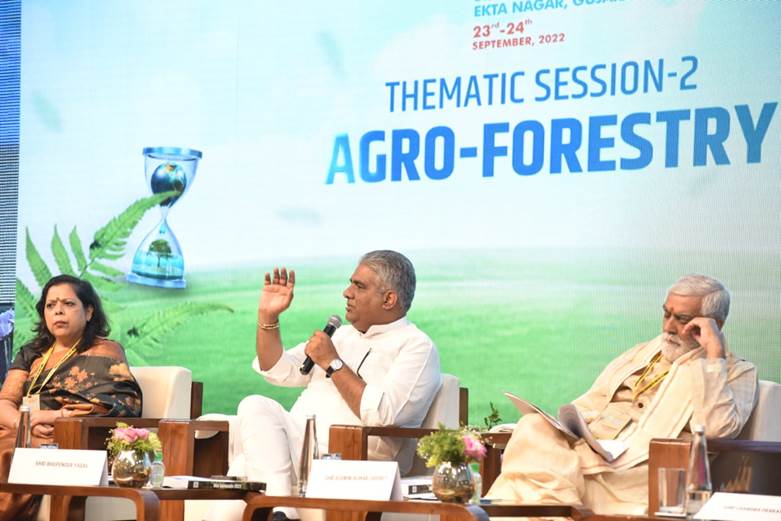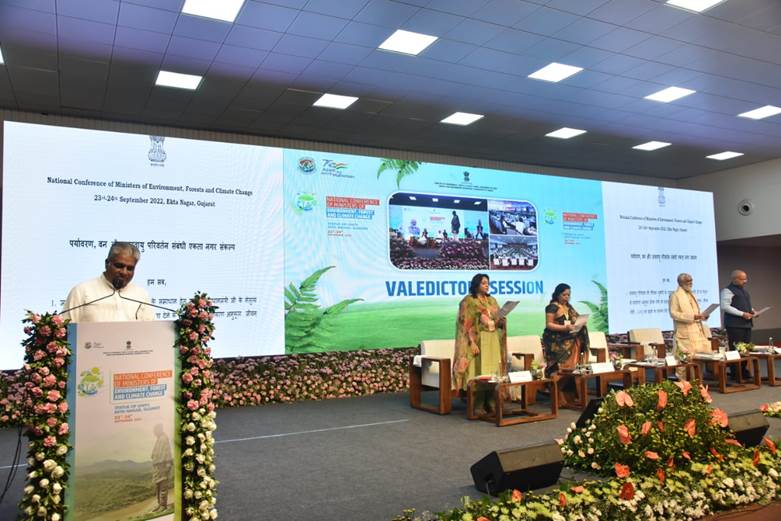Thread
Background
Thread is a tightly twisted strand of two or more plys of yarn that are circular when cut in cross section. It is used for hand sewing and in home sewing machines. Ninety-five percent of all sewing thread that is manufactured is used in commercial and industrial sewing. Sewing thread is distinguished from yarn by the fact that thread is used to sew together garments or other products, but yarn is the collection of fibers used to weave or knit into a textile fabric. The terms are confusing and are often used interchangeably; thread can be made of yarn, but yarn is not made of threads.
Thread is wound on spools or large cones that are marked on their ends with the size or fineness of the thread. Thread for handwork and machines (both home and commercial machines) has to be smooth and friction-free. It should be easy to thread through needles, and it should move easily when tension is applied to it. Strength to hold stitches when garments are being worn and during laundering is a requirement, as is elasticity during stitching and wear.
The three basic types of thread are based on their origin and are animal, plant, or synthetic. Silk thread is best for wools and silks (fabrics of animal origin). It is strong, very elastic, and fine in diameter. Silk is also used for tailoring, to finish the edges of buttonholes, to sew on buttons, and for decoration. Buttonhole twist is about three times the diameter of sewing silk and shiny or lustrous. It is strong and can be permanently stretched.
Cotton threads are made of the cellulose from plants and are used to stitch fabrics like linen, rayon, and cotton that also have plant origins. Plant-based fabrics may shrink, and cotton thread has the same shrinkage characteristics. Also, cotton thread does not stretch, so it is useful for woven fabrics but not stretchy knits. Cotton is also used to make basting thread that is used to hold pieces of a garment together temporarily until the garment is sewn. Cotton basting thread is inexpensive and is loosely twisted so it can be broken easily and pulled out when permanent stitching is in place.
Nylon and polyester threads are preferred for synthetics and stretch knits. Both types of synthetic threads have the same characteristics including no shrinkage, high strength, and excellent abilities to stretch and recover that make them suitable for knits, preshrunk fabrics, and sheers. Nylon and polyester are the only threads that can be made from a single yarn or single ply. Nylon thread was popular in the 1960s and 1970s because it is clear and so matches any fabric; however, nylon's stretching properties and relative brittleness also work as disadvantages, and this thread has become less popular. Synthetic threads are marketed under a variety of names including polypropylene, Kevlar, Teflon, and Nomex. Production of Kevlar and Nomex is reviewed and approved by Underwriters Laboratories because these threads are used to stitch fire-resistant and -retardant products such as suits for firefighters and motor racing drivers as well as sleepers and crib linens for infants.
Thread can also be made of combinations of fiber. Thread with a core of polyester and an outer wrap of cotton, spun polyester, or rayon combines the characteristics of both fibers, with the outer fiber creating the appearance or finish of the thread.
History
Thread has been essential to humans since the first garments were made for warmth and protection. Early sewing thread consisted of thin strips of animal hide that were used to stitch together larger pieces of hide and fur. The advance of civilizations brought many refinements in clothing and adornments, including the spinning and dyeing of thread. The Egyptians were skilled at making thread from plant fibers and in using the wool and hair from domestic animals in spinning. They and the Phoenicians also pioneered the use of berries and plant matter in the manufacture of colorful and longlasting dyes. The Chinese and Japanese discovered the beauties of silk fibers spun as thread and made as cloth.
Sewing thread had at least two historical heydays. In the Middle Ages, improvements in shipping, wool production and processing, and the opening of the Silk Road to Asia provided fertile ground for the flowering of woven tapestries and needlework. Tapestries were an art form that allowed large spaces to be filled with colorful scenes that were also portable. Tapestries were woven of wool yarn primarily, but linen, cotton, silk, and gold and silver were also used in weaving these magnificent paintings in fiber. Seamstresses and needleworkers were inspired to use the same materials in smaller works stitched with sewing or embroidery thread.
During the Industrial Revolution in the seventeenth and eighteenth centuries, production of thread moved out of the cottages and into factories equipped with high-speed machines. Machine manufacture generated more uniform thread with fewer flaws, and producers could devote more time to maximizing the characteristics of the types of fibers being used. Stronger thread, truer dye colors, and production of a wider variety of thread for different applications were among the direct results.
Raw Materials
Silk thread
Silk worms produce cocoons from which silk is made. The female silk worms feed on mulberry leaves until the worms mature and begin to spin cocoons. The worm secretes the silk thread from specialized glands below its mouth. It completes the cocoon around itself; over a two- to three-week period, it becomes a pupa then a moth. The cocoons can be harvested when the pupas are still inside so that so-called nett silk can be produced; cocoons are also collected after the moths have hatched, and silk from these is termed Schappe silk.
Cotton thread
Cotton is picked from cotton plants in the field and compressed into large bales. The bales often contain dirt, broken pieces of cotton boll, seeds, and other impurities, so cleaning is a first step at the mill. The bale is broken, the fibers are opened by a comb-like device, mixed together, and cleaned. The cleaned cotton fibers are termed laps. The laps are fed into a carding machine that separates the fibers. Further cleaning, combing, and sorting readies the fibers for processing into thread.
Polyester thread
Polyester is a petroleum product. During the cracking process, crude oil is broken down into a number of components that will be processed into a range of products from gasoline to plastics including polyester. Xylene, a hydrocarbon compound, is generated during cracking. Nitric acid and glycol are added to modify the xylene by a series of chemical reactions. The fluid is heated and condensed in an autoclave, and the molecules align to form long molecules called polyester. The resulting mass is extruded, cooled with water, and cut into chips. These chips are shipped from the refinery to the thread manufacturer for spinning.
Design
Engineers who design sewing thread are called seam engineers. They are experienced in the practical aspects of sewing, sewing machine operation, and clothing manufacture. When a new sewing thread is designed, the needs of the specific market are analyzed carefully, and a prototype thread is produced and tested under actual use conditions. The best thread products are needed to meet the demands of new and everchanging markets.
The Manufacturing
Process
Nett silk
- 1 Cocoons containing the pupas are heated with air to keep the pupas inside.
- 2 The cocoons are immersed in water and a brushing motion unwraps the silk thread; a single thread can be up to 1,000 yd (3,000 m) long.There are two types of silk manufacture. Both use the cocoon of the silk worm to produce silk thread, however, one processes the cocoons that still contain the pupa, producing a soft silk called nett silk. The other utilizes cocoons that have already hatched to produce schappe silk. To make nett silk hot air is used to inhibit the growth of the pupa inside the cocoon, the cocoon is unraveled, and several yarns are wound together to produce a thread. Since it is derived from the older, hatched cocoon, schappe silk manufacture begins with the soaking, softening, washing, and drying of the cocoons. Next, the cocoons pass through steel rollers with combs to produce bundles of long, straight fibers of silk, which are combed, twisted, and spun into thread.
- 3 Several threads from the same cocoon are wound together in long loops or hanks to produce a single yarn. Three of these single yarns are twisted to produce nett silk thread. More than three single yarns can be used depending on the planned use of the thread.
Schappe silk
- 4 Schappe silk is made from cocoons from which the silk moths have hatched. This matured material is tougher than nett silk cocoons and must be softened, washed, and dried.
- 5 The cocoons are passed through steel rollers with combs to produce bundles of long, straight fibers of silk called combed top or peigné.
- 6 Several bundles are grouped together to form a band that is also combed into a narrower band and fed through rotating rollers. The emerging yarn is slightly twisted and is called the roving.
- 7 The roving is spun to form a single thread, and several single threads are wound together, twisted, and fed onto a bobbin or cone.
Cotton thread
- 8 Cleaned, combed, and sorted cotton is fed through a series of rollers in a process called drawing that generates a narrow band of cotton fiber.
- 9 The fiber is slightly twisted to form roving, and the roving is drawn and twisted again.
- 10 It is spun to form a single thread that is wound and twisted with others to form the thread.
- 11 Cotton thread is singed over an open flame and mercerized by immersion in caustic soda. These processes strengthen the thread and give it a lustrous finish. The treated cotton thread is wound on bobbins or cones.
Spun polyester thread
- 12 The chips of polyester received from the refinery are spun into long filaments that are banded together to form polyester tow. Tow contains more than 170,000 continuous, fine, parallel filaments in a long band.
- 13 The tow is stretched to the breaking point so that weaknesses in the filaments are exposed. The weak points are cut out, and fibers that are 2.5-4.75 in (60-120 mm) are produced.
- 14 These resulting strong fibers are banded together again in parallel, and several bands are combined until a narrow, even, high-quality band of parallel fibers results.
- 15 These bands are further stretched and slightly twisted into roving, and the roving is spun and twisted into single thread. The drawing and twisting process stretches the fibers up to 10-20 times their length in the tow stage, and the spindles on the spinning machines that do this work turn at 12,000 revolutions per minute.
Dyeing and packaging finished
thread
All types of thread may be finished in similar ways.
- 16 After manufacture, the thread is dyed. Dye is mixed in large vats; several hundred colors can be produced, and dye mixing is controlled by computer. Large cones or bobbins of manufactured thread are lowered into pressurized vessels, and the dye (and other additives) are released into the vessels by computer. After it is removed from the dyeing vessel, the thread is dried for 24 hours. About 6.6 tons (6 metric tons) of thread can be dyed in one day; this equals 66 million yd (200 million m) of sewing thread or enough to circle the equator five times.
- 17 The dyed thread is wound on smaller spools for industrial or home use, and the spools are packed into boxes for shipment. Optical devices monitor the spool winding and packing processes.
Quality Control
Thread must emerge from the factory with a great combination of performance characteristics. During its lifetime, thread will be passed through a number of metal guides on a sewing machine, held in tension by the sewing machine needle and subjected to its action, bent into position from the bobbin to interlock with the thread from the needle, stretched and abraded when the garment is worn, and laundered or dry cleaned many times. Thread functions not only to clothe but to protect us. We count on the thread in products like shoes and automobile safety belts to protect us throughout the life of the product.
Product manufacturers place considerable demand on thread makers to improve the quality of thread and to adapt to demands of the workplace. For example, a lubricating finish is applied to thread that is used to stitch thermoplastic materials so the sewing machine needle is constantly lubricated to prevent its frictional heat from rising and fusing the material.
Production of almost all types of threads is fully automated. A device called an Autoconer monitors the thread quality, cuts out imperfections, and rejoins the ends to produce an even thread without knots, joins, or weak areas.
Byproducts/Waste
Cotton thread production results in more waste than the manufacture of other types of thread because of the parts of the cotton that cannot be used. The volume is still relatively minor but must be disposed. Imperfect fibers and fiber dust are generated in the early stages of production and, again, must be disposed.
The Future
In the future, the manufacture of thread must continue to adapt to new types of fabric and clothing design and production. Futurists may predict that clothing and its varieties will become obsolete; however, the reality is that the consumer wants to express personality through a closet filled with clothing for a variety of activities. And this clothing is sewn together with specialized threads.
Where to Learn More
Books
Cream, Penelope, ed. The Complete Book of Sewing. New York: DK Publishing, Inc., 1996.
Hollen, Norma and Jane Saddler. Textiles. New York: The Macmillan Company, 1968.
Tortora, Phyllis G. Understanding Textiles. New York: The Macmillan Company, 1992.
Other
Coats & Clarke, North America. http://www.coats.com .
Coats Viyella PLC, Thread Division. http://www.coats-viyella.co.uk .
Gütermann of America, Inc., and Gütermann AG, Germany. http://www.guetermann.com .
Saunders Thread Company. http://www.saunders-thread.com/sewing.html .
Synthetic Thread Company. http://www.syntheticthread.com .
— Gillian S. Holmes
Read more: http://www.madehow.com/Volume-5/Thread.html#ixzz7g6OTxm4R
